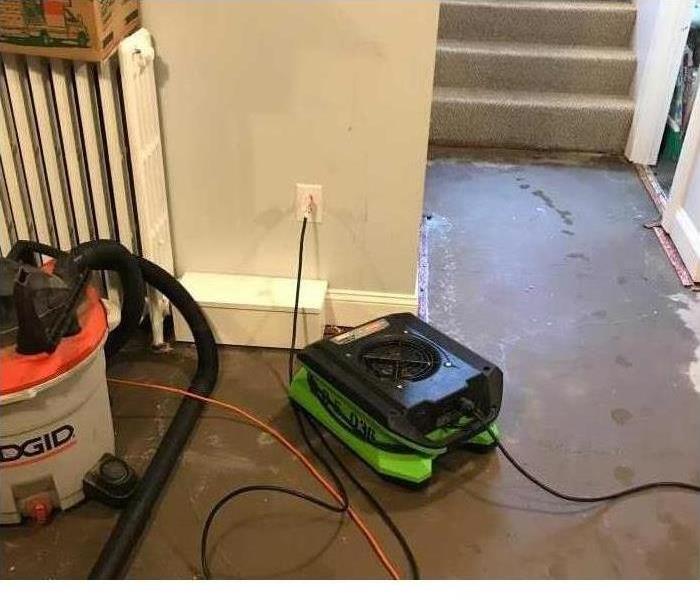The Dangers of Secondary Water Damage After a Flood
5/21/2018 (Permalink)
If your business experiences flooding, whether from a burst pipe, overflowing sewer or an extreme weather event, you may think only areas that are underwater will be damaged. Unfortunately, that isn’t the case. The flood water in your building can do a lot of primary damage, but the high humidity conditions inside your business caused by the evaporation of flood water can lead to serious secondary damage, such as the growth of black mold. Hiring a professional trained in water damage restoration at SERVPRO can ensure that the water is extracted and your building thoroughly dried before more damage can be done.
Why Does Secondary Damage Occur?
When a building floods, the large amount of water begins to evaporate, creating high humidity conditions. This atmospheric moisture can saturate walls, cabinets and shelves and condense on metal surfaces. The longer these moist conditions persist, the more damage they can do.
What Are the Consequences of Secondary Damage?
Prolonged exposure to damp conditions can cause serious deterioration of many building materials:
• Drywall crumbles.
• Plaster can crack and crumble.
• Plywood and wood swells, warps and cracks.
• Metal begins to rust.
• Black mold grows on virtually any moist surface.
If flood water is not extracted in a timely fashion, these secondary effects can impact structural beams and concrete, weakening your building’s structure and threatening your place of business.
What Can You Do About It?
Don’t wait to take action. As soon as conditions are safe, contact an experienced water damage restoration professional at SERVPRO to assess the situation and formulate a plan. The more quickly water is extracted from the premises, the lower restoration costs will be in the long run. Once pumps and vacuums have been employed to remove excess water, specialized industrial air movers and dehumidifiers will ensure there’s no lingering moisture to deteriorate materials or foster black mold growth.






 24/7 Emergency Service
24/7 Emergency Service
